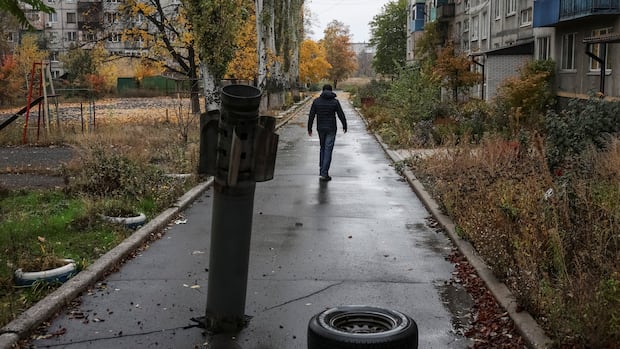Plumes of smoke rise from a dozen different locations, buildings lie in shattered ruins and many apartment blocks bear massive scars from Russian glide bombs.
The remaining inhabitants of Dobropillia, a coal-mining town just a few kilometres from the front line in Ukraine's eastern Donbas region, shuffle to find food or water under the constant gaze — and hum — of the drones that now rule the battlefield.
On a cloudy day in mid-October, the inclement weather was one of the few defences against the drones that fly constantly overhead as Russia seeks to destroy and conquer the few remaining cities in the region it does not yet hold.
Viktoriya Sergeeva, who runs one of the city's remaining supermarkets, arrived here from Pokrovsk, a city about 30 kilometres south. "My parents insisted on staying there, so I stayed with them until they were both killed a few weeks ago," the 45-year-old said.
Refugees like Sergeeva have helped bolster the population of Dobropillia, which rescuers estimate has dropped to less than 1,500 residents, from 28,000 in 2022, just prior to the Russian invasion.
iktoria Sergeeva, 45, recently fled to Dobropillia, Ukraine, from Pokrovsk after a bombing there killed her elderly mother and father. (Neil Hauer/CBC)
But Russian soldiers, alone or in pairs, are also walking the streets after sneaking through Ukrainian lines — part o
Continue Reading on CBC News
This preview shows approximately 15% of the article. Read the full story on the publisher's website to support quality journalism.
